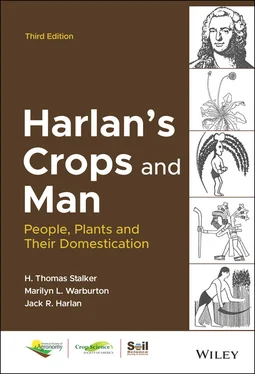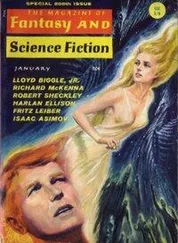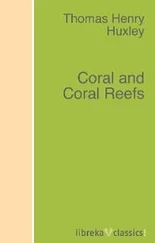139 135
140 136
141 137
142 138
143 139
144 140
145 141
146 142
147 143
148 144
149 145
150 146
151 147
152 148
153 149
154 150
155 151
156 152
157 153
158 154
159 155
160 156
161 157
162 158
163 159
164 160
165 161
166 162
167 163
168 164
169 165
170 166
171 167
172 168
173 169
174 170
175 171
176 172
177 173
178 174
179 175
180 176
181 177
182 178
183 179
184 180
185 181
186 182
187 183
188 184
189 185
190 186
191 187
192 188
193 189
194 190
195 191
196 192
197 193
198 194
199 195
200 196
201 197
202 198
203 199
204 200
205 201
206 202
207 203
208 204
209 205
210 206
211 207
212 208
213 209
214 210
215 211
216 212
217 213
218 214
219 215
220 216
221 217
222 218
223 219
224 220
225 221
226 222
227 223
228 224
229 225
230 226
231 227
232 228
233 229
234 230
235 231
236 232
237 233
238 234
239 235
240 236
241 237
242 238
243 239
244 240
245 241
246 242
247 243
248 244
249 245
250 246
251 247
252 248
253 249
254 250
255 251
256 252
257 253
258 254
259 255
260 256
261 257
262 258
263 259
264 260
265 261
266 262
267 263
268 264
269 265
270 266
271 267
272 268
273 269
274 270
275 271
276 272
277 273
278 274
279 275
280 276
281 277
282 278
283 279
284 280
285 281
286 282
287 283
288 284
289 285
290 286
291 287
292 288
293 289
294 290
295 291
296 292
297 293
298 294
299 295
300 296
301 297
302 298
303 299
304 300
305 301
306 302
307 303
Harlan’s Crops and Man: People, Plants and Their Domestication
Third Edition
H. Thomas Stalker, Marilyn L. Warburton, and Jack R. Harlan

Copyright © 2021 American Society of Agronomy, Inc., Crop Science Society of America, Inc., and Soil Science Society of America, Inc. All rights reserved.
Copublication by American Society of Agronomy, Inc., Crop Science Society of America, Inc., and Soil Science Society of America, Inc. and John Wiley & Sons, Inc.
No part of this publication may be reproduced, stored in a retrieval system, or transmitted in any form or by any means electronic, mechanical, photocopying, recording, scanning, or otherwise, except as permitted by law. Advice on how to reuse material from this title is available at http://wiley.com/go/permissions.
The right of H. Thomas Stalker, Marilyn L. Warburton, and Jack R. Harlan to be identified as the authors of this work has been asserted in accordance with law.
Limit of Liability/Disclaimer of Warranty While the publisher and authors have used their best efforts in preparing this book, they make no representations or warranties with respect to the accuracy of completeness of the contents of this book and specifically disclaim any implied warranties or merchantability of fitness for a particular purpose. No warranty may be created or extended by sales representatives or written sales materials. The publisher is not providing legal, medical, or other professional services. Any reference herein to any specific commercial products, procedures, or services by trade name, trademark, manufacturer, or otherwise does not constitute or imply endorsement, recommendation, or favored status by the ASA, CSSA and SSSA. The views and opinions of the author(s) expressed in this publication do not necessarily state or reflect those of ASA, CSSA and SSSA, and they shall not be used to advertise or endorse any product.
Editorial Correspondence: American Society of Agronomy, Inc. Crop Science Society of America, Inc. Soil Science Society of America, Inc. 5585 Guilford Road, Madison, WI 53711‐58011, USA
agronomy.org crops.org soils.org
Registered Offices: John Wiley & Sons, Inc., 111 River Street, Hoboken, NJ 07030, USA
For details of our global editorial offices, customer services, and more information about Wiley products, visit us at www.wiley.com.
Wiley also publishes its books in a variety of electronic formats and by print‐on‐demand. Some content that appears in standard print versions of this book may not be available in other formats.
Library of Congress Cataloging‐in‐Publication Data
Names: Stalker, H. T. (Harold Thomas), 1950– author. | Warburton, Marilyn L., author | Harlan, Jack R. (Jack Rodney), author.
Title: Harlan’s crops and man : people, plants and their domestication / H. Thomas Stalker, Marilyn L. Warburton, and Jack R. Harlan.
Other titles: Crops and man
Description: Third edition. | Hoboken, NJ : John Wiley & Sons, Inc. ; Madison, WI : American Society of Agronomy, Inc. : Crop Science Society of America, Inc. : Soil Science Society of America, Inc., [2021] | Includes bibliographical references and index.
Identifiers: LCCN 2020026833 | ISBN 9780891186335 (hardback)
Subjects: LCSH: Crops–History. | Agriculture–History.
Classification: LCC SB71 .H3 2021 | DDC 633–dc23
LC record available at https://lccn.loc.gov/2020026833
doi:10.2135/harlancrops
Cover Design: Wiley
Cover Image: © ACSESS
Third Edition, 2021
Since the second edition of Crops and Man was published some 30 years ago, germplasm collections have expanded greatly, molecular genetics has taken root and is being used to answer age‐old questions, and archaeological research has discovered many ancient plant and animal remains, uncovered new sites, and expanded our knowledge of the movement of man and his crops throughout the world. Many of the early studies are no longer possible to continue because hunter‐gatherers have all but disappeared except in a few relatively isolated regions.
Crop plant evolution involves an understanding of human behavior, as well as extensive knowledge about plants, what happens to plants as man selects traits that he values, and the importance of these plants in varying societies. The process of evolution takes place over both time and space, and as Jack Harlan so eloquently points out, there is no one model or answer to all questions. In this edition, we made every effort to maintain the basic structure of the previous volumes, while updating information that has evolved during the past 30 years. Most of the original references are still used because evolution of particular plants and many theories have not changed, and the older literature presents the foundation for current work.
Jack Harlan did not formulate his theories and concepts by sitting in an office or library and daydreaming; he explored many regions of the world’s centers of diversity. He collected more than 12,000 accessions of cereals, forages, legumes, trees, and fruits from more than 45 countries. Many of these have been extensively used as the sources for disease and insect resistances and to introduce genetic variability to modern production agriculture. He made taxonomic revisions of the genera Cynodon and Sorghum and studied the evolution of many other species, especially the cereals. He was also involved in archaeological research and had firsthand knowledge of ancient plant types.
Читать дальше













